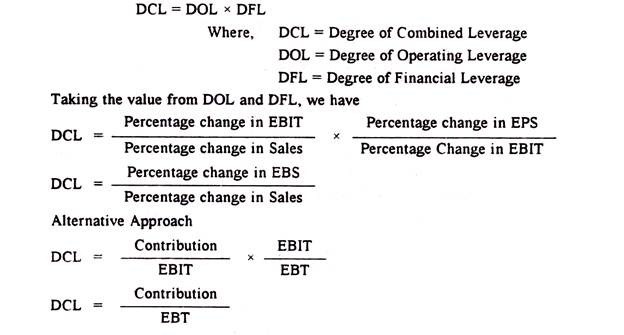treasurer’s cash book Dictionary Definition
Contents
The cash that is coming in is known as the receipts which will be on the left and the cash payments are recorded on the right. As all the cash transactions are recorded here, there is no need for an extra ledger account. The cash disbursements journal – Cash Disbursement Journal records all the cash payments and the cash receipts journal, cash book definition which helps in recording the cash received into the business. The cash disbursement journal consists of such items as payments payable to vendors, which is done to reduce the accounts payable. The cash receipts journal consists of the payments that are made by the customers on the outstanding accounts receivable or the cash sales.
You can learn more about verifying the identity of other users in our Safety Center. An account is a summarised form of all the transactions relating to a particular head at one place in chronological order. An account not only records the amount of the transaction but also its effect and direction. The description of the corresponding transaction type is recorded under this heading. For example, to record a cash sales transaction, one will write “sales” under the particular column. Cash receipts journal counting the cash earned by the company.
It records the cash transactions and works as a book of original entries and ledger. Let’s look into the different types of general cash books. A simple petty cash book is something that is used to record a large number of petty cash transactions. Cash receipts and cash payments are included in the cash budget. A cash budget is prepared to forecast the cash requirements, which helps to indicate the surplus or shortage of cash during the budget period. Petty cash book goes by the name, as it records even the smallest transactions that take place in a firm or in a company.
We have often heard people asking what is a cash book, well its basically a fiscal diary in which all cash earnings and expenditures, involving bank withdrawals and deposits, are recorded. However, please note that a cash book and a cash account are different in several aspects. Save taxes with ClearTax by investing in tax saving mutual funds online. Download ClearTax App to file returns from your mobile phone. CAs, experts and businesses can get GST ready with ClearTax GST software & certification course. ClearTax can also help you in getting your business registered for Goods & Services Tax Law.
- A cash journal is named so since the financial or bank operations are documented in sequential sequence when they are occurring.
- The only drawback of this type of accounting system is that you, as a firm, might end up paying tax on revenues even when you might have not received it .
- The voucher number of each item of receipt and payment is also written.
- In the debit side of the Cash Book, all cash receipts are recorded, while on the credit side all cash payments are recorded.
- There are thousands of cash transactions that take place in an organization in a given accounting year and it is an extremely tedious and meticulous job to journalize them.
Time for EPFO to shift to NAV based accountingThe best time to convert to NAV-based scheme is now. On a conservative estimate, the unrealised gains must be in the range of %. And if shifted to NAV-based system, the holding value of EPFO should jump up by 20%- 30%. Cash in hand at any time can easily be ascertained through Cash Book balance. In this column, the name of the opposite account is written .
The target was to make you all understand what is a cash book, how does it work, its types, and its features. Now that we have reached the end of this article, I hope all the readers know everything about a cash book. It is safe to say that a cash book is advantageous since it allows for quick cash confirmation by comparing the amount to the real cash you have on you, which aids in the detection of entry errors. Another key characteristic of the cash journal is that the cash records are kept there and then transferred straight to the appropriate General ledger.
When the accounting assistant gets the cash flow book, they finish the double-entry procedure by transferring the purchases to the cash journal’s additional accounting records. Just like a typical accounting system, the cash book amount is put with the financial statement. All the items of cash receipts are recorded on the left-hand side and all items of cash payments on the right-hand side in order of date.
What is cash book? Explain the types of cash book – Accountancy
In the debit side of the Cash Book, all cash receipts are recorded, while on the credit side all cash payments are recorded. Discount is the margin given by the seller to the consumer on the market price where the shopkeeper has reduced the price of a commodity to increase the sale of that particular product. The Discount is a nominal account and the discount given is entered on the debit side and the discount received is recorded on the credit side. At the end of this accounting period, both columns are balanced and the closing balances are transferred. A cash book can be defined as a financial journal which contains all the cash receipts and disbursements. Cash Book also includes bank deposits and bank withdrawals.

Khatabook does not make a guarantee that the service will meet your requirements, or that it will be uninterrupted, timely and secure, and that errors, if any, will be corrected. The material and information contained herein is for general information purposes only. Consult a professional before relying on the information to make any legal, financial or business decisions.
TaxCloud (Direct Tax Software)
So that cash receipt and cash payment transactions are recorded separately. To explain in simple language, a cash book is a fiscal diary in which all cash earnings and expenditures, involving bank withdrawals and deposits, are recorded. The entries in the cash book are subsequently recorded to the ledger accounts. If you are wondering what is a cash book and what does it do, read on to find out. A cash book is a financial newspaper which includes all cash receipts and disbursements, including bank deposits and withdrawals.
Students can find the best tutors and instructors through LearnPick’s online tutoring marketplace. We neither supply nor recommend tutors to those in search of such services, and vice-versa. LearnPick does not verify the identity or authenticity of information posted by tutors or students.
Definition of a Cash Book
A cash book is an entirely separate ledger which is dedicated to recording cash transactions. However, a cash account is a general ledger account which records all kinds of financial transactions. A cash book can do the job of both a journal and a ledger for accounting. On the contrary, a cash account is like an accounting ledger. In a cash book, information about the source or use of funds must be noted.

The cash receipts are recorded on the debit side while all the cash payments are entered on the credit side. The three column cash book, as the name suggests, comprises three columns each on the debit and https://1investing.in/ credit sides, respectively. One column records cash transactions, the second column records bank transactions and the third, transactions relating to discounts allowed and received, as the case may be.
On the other hand, the cash aspect of all-cash transactions is finally recorded in the Cash Book ; so a Cash Book is also a Ledger . In the single column Cash Book, only cash transactions are recorded. According to the definition of books of accounts given under the Income Tax Act, 1961, cash books form part of the books of accounts. This is much faster to access the cash information in a cash book than by following the cash through a ledger.
As a result, there is no need to keep any cash accounts in the ledger logbook. Efiling Income Tax Returns is made easy with ClearTax platform. Petty Cash Book is a book that records a large number of small payments such as conveyance, cartage, postage, telegram, and other expenses. These expenses occur very frequently in an organization and it becomes very difficult for the main cashier to accommodate them in the main Cash Book. As it is maintained date wise, any cash payments or the transaction can be correctly traced back in the cash book.
Features of Cash Book
In Journal, Recording all the transactions at one place in chronological order. In Ledger, After recording, all the transactions are posted to their respective accounts. All the columns of the expenses are totaled from time to time and such periodic totals are posted to the respective debit side of the Expense Account. The balance of such a cash book represents unspent cash in hand. It helps in creating a regular record of transactions date wise for the convenience of accounting personnel. The voucher number of each item of receipt and payment is also written.
Triple column cash book
In certain businesses, cash books are revised frequently. A cash journal’s most striking characteristic is that it can’t have an outstanding balance. A cash book is defined as a subsidiary accounting book that records only cash transactions. There are thousands of cash transactions that take place in an organization in a given accounting year and it is an extremely tedious and meticulous job to journalize them. The main function of a Cash book is to record the cash transactions which are used as a ledger and a journal to find out about the activities in a firm.
The entries about bank transactions and discounts will be recorded in separate ledgers. The standout feature of the cash book is that it will always depict a debit balance. A regular cash journal is often referred to as a single-column cash book. It shows income receipts present on the left side and money transfers on the right side . In the situation of single-column cash journals, the bank operations and the benefits offered for purchases will be recorded in distinct subsidiary ledgers.
